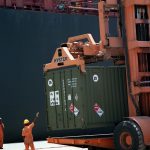Tracking Cargo on the Move: How to Go About It?
This is a guest post by Patrick Chown.
Logistics is simply about moving goods from one location to another in the right amount of time. However, it is one of the most complex and critical parts of business operations. It becomes even more challenging when it comes to international shipping. Complexities of moving goods across borders and oceans add on top of the generally complex nature of supply chains. The ability to track goods on the move makes it simpler and provides real-time actionable insights.
The Need for Tracking
Imagine that you are a cosmetics producer with a production plant in the United States. You import oleochemicals from India to manufacture your products. It is a critical raw material you need for production and is transported by ships. On route, the Suez canal gets blocked and the shipment will be delayed. Your production will halt if you cannot get the oleochemicals in time.
If you were tracking the movement of cargo, you could order oleochemicals from a backup producer in Thailand. This movement does not require passage through the Suez canal, and you will be able to receive the goods you need and not need to halt production. With tracking, you can also plan contingencies for other eventualities like unfavorable weather conditions, geopolitical conflicts, etc.
Tracking cargo in international shipping helps you in effective supply chain management. It also helps to manage contingencies with minimal impact on your business operations. For eCommerce companies, tracking gives your customers the ability to see the shipping status of their package and it provides a superior customer experience for consumers. Depending on your situation, there could be other benefits of tracking unique to your industry. But the ability to track international shipping is always better than not having the ability to track.
Tracking International Shipment
To effectively track international shipments, you need to first assess your requirement. Your use cases may not require real-time data. Regular updates at fixed intervals might be sufficient. These variables will determine the best way to track your shipments. With your specific set of requirements, you will be able to design the appropriate tracking methodology and improve on it. You can also choose to outsource logistics to 3PL operators that provide tracking for international shipments. Despite the methodology you choose, you need network connectivity and software to power international tracking.
Network Connectivity
The major challenge for tracking international shipments is network connectivity. Internet connectivity for international shipments is sparse. Satellite communication has limited bandwidth and is expensive. Even for intracontinental shipping, you will have to juggle connectivity from multiple telecom operators in different countries. For real-time communication, you will need to employ these expensive methods.
Another way to go about updating tracking information is at waypoints. You can utilize internet connectivity in well-networked warehouses and distribution centers to send tracking information. This diminishes the need for expensive network connectivity required for real-time tracking. You will be able to know a shipment is delayed when it does not reach a waypoint within the expected timeframe.
Software
Tracking data in itself is not sufficient for managing logistics operations. You need the information at the right place and at the right time to take the necessary actions. Software tools are required to make this possible. Most prominent supply chain software has shipment tracking as a main feature.
The tracking information isn’t only relevant to the supply chain function of your business. Finance, sales, and other relevant departments also require tracking information. The software you use for tracking should integrate well with other suites like enterprise resource planning (ERP), customer relationship management (CRM), warehouse management system (WMS), etc. This ensures that the entire organization has visibility on tracking information. It also avoids any bottlenecks in decision-making related to international shipping.
What’s Next…
Modern businesses rely on easily accessible information to manage their daily operations. You can get tracking information for international shipments with reliable network connectivity and efficient software. But for a large business with a huge volume of international shipments, employees can’t synthesize all the information. Big data analytics or AI can be instrumental in processing large amounts of data and deriving actionable insights from it. It can also be used to automate various processes in international logistics operations. Once you have a good tracking system in place, you need to explore the possibilities of AI to make the process more efficient and profitable.
This was a guest post by Patrick Chown.
Author Bio:
Patrick Chown is the owner and president of network installation company, The Network Installers. The Network Installers specializes in network cabling installation, structured cabling, voice and data, audio/visual, commercial WiFi, and fiber optic installation for industrial and commercial facilities.





